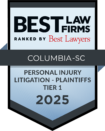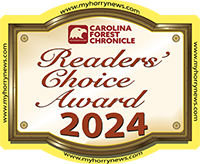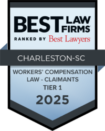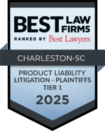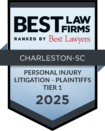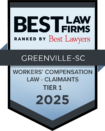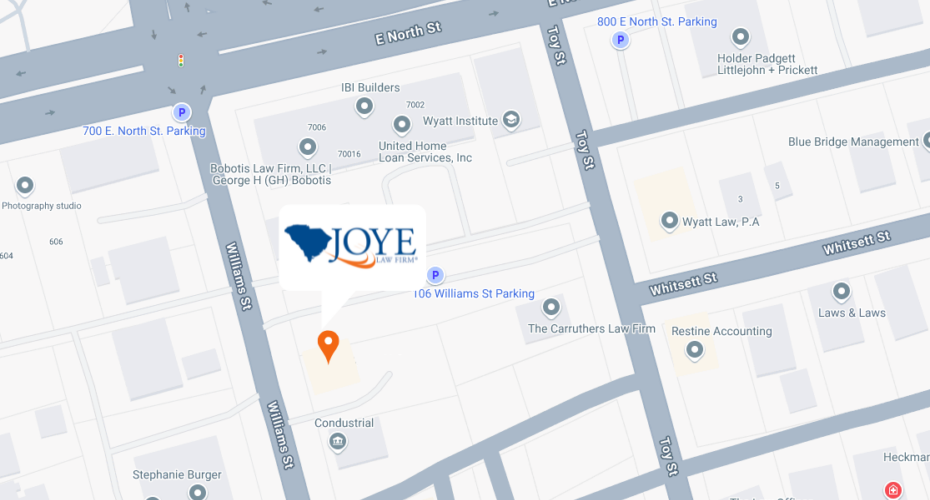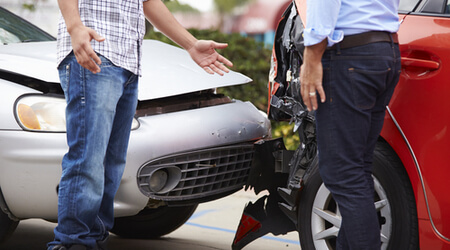
One driver may be solely at fault for a car accident or two or more motorists may share the blame for an accident. The determination of fault is a critical part of any accident claim seeking compensation for injuries after an accident.
To obtain compensation after a serious car accident, you will need a detailed investigation of the crash that demonstrates how the crash occurred and who was at fault. You may still seek compensation even if you were partly at fault in an accident in South Carolina. You will also need an accounting of the scope and cost of your injuries and other accident-related losses. This requires a thorough investigation by a knowledgeable car accident lawyer working on your behalf.
The dedicated attorneys at Joye Law Firm investigate South Carolina car accidents and pursue full compensation for people who have been seriously injured by other drivers’ negligence or recklessness. Our law firm has been helping injured people in South Carolina for more than 50 years. We have offices in N. Charleston, Columbia, Clinton, and Myrtle Beach and represent clients throughout the state. We have the resources and determination to handle the toughest injury cases.
We understand that choosing the right lawyer is a big decision. Take a look at the reviews of former clients about the legal representation provided by Joye Law Firm. Then call us at (888) 324-3100 or submit our online contact form for a free claim evaluation.
What is an At-Fault Accident in South Carolina?
An at-fault accident in South Carolina is an auto crash in which you were determined to be the cause of the accident due to negligence or carelessness. It is similar to driving on the right-hand side of the road when you should be driving on the left side. In this case you would be deemed negligent and could be charged with an at-fault accident.
How to Determine Who is at Fault?
The determination of fault after a car crash in South Carolina involves the police, the insurance companies and in some cases the courts.
After most car accidents, a law enforcement officer from the local police, sheriff’s department or the S.C. highway patrol will respond and investigate the accident.
Law officers are focused on whether laws were broken and whether any of the drivers involved should be cited and face criminal charges. If the officer determines a driver is at fault, the officer may charge a driver with a traffic infraction or a more serious charge and make an arrest.
The police accident report may provide guidance to insurance companies as they determine what sort of claim payout should be made after an accident. But the police report itself cannot be used as evidence.
S.C. Accident Reports are Not Allowable Evidence
To determine how a car accident occurred, a law enforcement officer from a police department, sheriff’s department of state highway patrol will interview the drivers involved in a car accident and any witnesses who saw the crash. The officer will document the position of the vehicles, take measurements at the scene and collect physical evidence at the accident scene.
If the investigating officer suspects that alcohol was a contributing factor in an accident, the officer may require one or more drivers to submit to a blood alcohol test. Police may obtain surveillance camera evidence showing the accident, if it’s available.
Once the officer has enough information to reconstruct what happened, the officer will write an accident report. The police may make a statement in the report about which driver was at fault for the accident, based on the officer’s judgment. As part of the officer’s investigation, the officer may cite a driver with a traffic violation or a criminal charge, such as driving while intoxicated. In many instances, however, police reports do not list a determination of fault.
South Carolina Code Section 56-5-1290 specifically says that police reports cannot be used to prove driver negligence in a lawsuit seeking to recover compensation. However, the law does allow the officer to refer to his or her report if called to testify in court.
Who is at Fault in a Side Collision?
Side impact collisions typically occur at intersections and cross streets where traffic converges. Determining which driver is at fault in a side collision involves identifying which driver had the right of way at the time of the accident and which motorist failed to yield. Each determination of fault depends on the specific facts of the accident.
Either the car that was struck in the side or the other vehicle that rammed it may be found to be at fault in an intersection of a side-impact collision. It depends on which driver failed to yield the right of way when required to do so.
Typically, in intersection collisions, one driver has disregarded a traffic light or stop sign or tried to run a changing light. If a driver passes through an intersection against the light and causes a side-impact crash, that driver may be determined to be at fault.
Police will talk to witnesses and those involved in the accident to try to make a determination of which driver had the right of way and which driver was at fault. In certain situations, the police may determine that two drivers are partially at fault. For example, the facts may show that one driver was speeding through an intersection and the other driver turned in front of the oncoming car and violated the other’s right-of-way. In this example, both drivers contributed to the intersection accident.
How Do Insurance Adjusters Decide Fault in an SC Car Accident?
When an accident claim is filed with an insurance company, then the insurance company’s adjusters will review the official police report and other evidence and assess who was at fault in the accident. Adjusters may interview drivers and witnesses and review medical records and other evidence as part of the process.
The insurance company adjusters will decide the percentage of fault to assign to each driver involved in the accident. Typically, the at-fault driver’s insurance will pay for the vehicle repairs, medical bills, and other losses through the driver’s liability insurance.
The insurance adjuster may decide that more than one driver made errors that contributed to the accident and assign partial fault to two or more drivers. The adjusters will assign a percentage of fault to each driver.
In South Carolina, a driver who is partially at fault in a car accident may still seek compensation for injuries so long as he or she is less than 51 percent responsible for the accident. You may still recover compensation, but any compensation that you receive would be reduced proportionately by your percentage of fault.
For example, if you sustained $100,000 in losses and medical bills in an accident and you were found to be 30 percent at fault, then you would be eligible to recover $70,000 in damages.
How Can an Injury Attorney Help With the Assignment of Fault?
It’s important to understand that the decision about each driver’s share of fault in a multi-vehicle accident is a subjective decision. Whatever the percentage, it’s a number negotiated between the adjusters involved.
It’s an important number because the determination of comparative fault influences how much money an insurance company is willing to pay to settle a claim.
An experienced personal injury attorney at Joye Law can investigate your car accident and present information to the insurance adjusters to show the other driver’s actions primarily caused the crash. Our goal is to minimize any fault on your part. This underscores the importance of working with an experienced car accident injury lawyer who has handled many settlement negotiations. Our attorneys at Joye Law are successful in resolving most personal injury cases out of court.
But if the insurance company’s settlement offer is too low, then you will need to file a car accident lawsuit and ask a court to order the insurance company to pay for all of your losses related to the accident. Negotiations to settle an injury claim may continue after a lawsuit has been filed and during preparations for trial. Some insurers don’t get serious about settling a case until it is ready for trial.
If your injury case goes to trial, then a South Carolina jury will evaluate the facts of the accident and decide what share of fault each driver has in an accident. The jury will assign fault. If a jury awards $100,000 in damages in an accident but decides that the injured party was 40 percent responsible for the accident, then the amount awarded would be reduced to $60,000.
What is an FR-10 Form?
The FR-10 Insurance Verification Form is a green form that the police officer who responds to your car accident will give you to be filled out by your insurance company. The form verifies that you have proper liability insurance, as required by South Carolina financial responsibility laws.
South Carolina laws require drivers or owners of cars involved in accidents to report the accident and submit the FR-10 Form to the South Carolina Department of Motor Vehicles within 15 days of the accident, regardless of who was at fault in the accident.
Contact a South Carolina Injury Attorney
If you have sustained serious injuries in a car accident in Charleston, Columbia, Myrtle Beach or anywhere in South Carolina, let our experienced and compassionate injury attorneys guide you through the claims process. We will investigate the accident and negotiate with the insurers on your behalf, allowing you to focus on your recovery.
Our goal is to help you rebuild your life and move forward after a serious injury. Call us at (888) 324-3100 or fill out an online contact form to speak with a car accident injury lawyer in Charleston, Columbia, Clinton or Myrtle Beach today.



